
views
Sauteing the Onions and Oats

Heat the olive oil. Add ½ cup (120 ml) of extra virgin olive oil to a large, straight-sided saute pan. Allow it to heat on medium-high until it begins to shimmer, which should take 5 to 7 minutes. If you prefer, you can substitute butter for the olive oil. You can also use a combination of butter and olive oil.
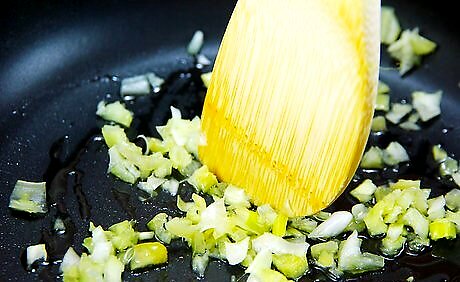
Saute the onions until they’re soft. Once the oil is heated, add 1 Spanish onion that’s been finely minced to the pan. Allow the onions to cook until they become soft, which should take approximately 8 minutes. Spanish onions are often labeled as yellow onions at grocery stores and farm stands.

Mix in the oats and toast them. After the onion has softened, add 2 cups (160 g) of steel-cut oats to the pan. Let the oats toast for about 2 minutes, or until they begin to smell nutty. Stir the oats regularly as you toast them to ensure that they don’t burn.
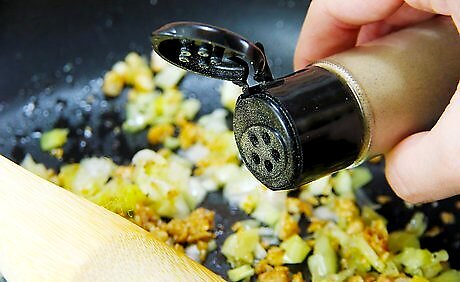
Season the mixture with salt and pepper. When the oats are finished toasting, add some kosher salt and freshly ground black pepper to taste to the mixture. Stir well to ensure that the mixture is evenly seasoned.
Adding the Liquid
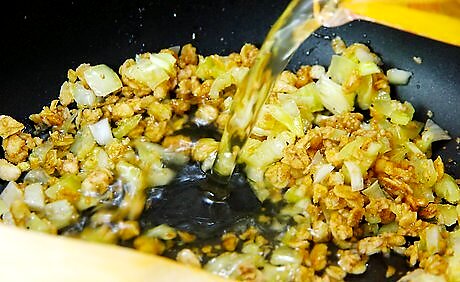
Stir in the chicken stock and some water. When the oat mixture is properly season, add 2 ½ cups (532 ml) of chicken stock and 2 ¼ cups (532 ml) of water to the pan. Mix well, and heat the mixture on medium until it comes to a simmer. You can substitute beef or vegetable stock for the chicken stock if you prefer. You can use all stock for the risotto’s liquid if you prefer.
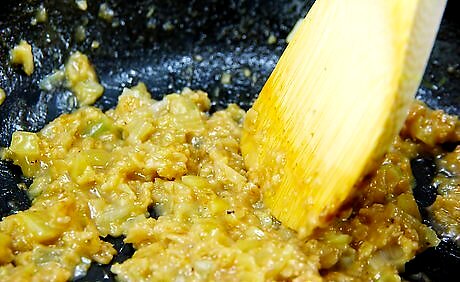
Cook the mixture until most of the liquid is absorbed. Once the oat mixture is simmering, lower the heat to medium-low. Continue to cook the mixture until nearly all of the liquid has been absorbed. Stir the mixture regularly as you cook it to ensure that the oats don’t stick to the pan.
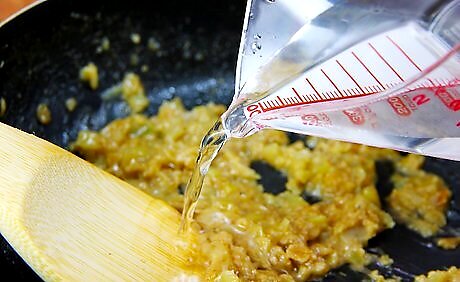
Add more stock or water and cook until the oats are tender. When the liquid has begin absorbed, continue cooking the mixture until the oats are tender, which should take approximately 25 minutes. Mix in more of the stock or water when the liquid is fully absorbed as necessary until the oats are finished cooking. The oats should be tender, but still have a slight bite to them when they’re finished cooking. The mixture will also develop a thick sauce. Stir the mixture frequently as you cook it down.
Finishing Off the Risotto
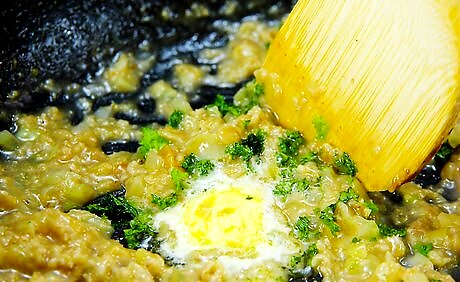
Mix in the butter and half of the herbs and cheese. When the oats are tender, add 2 tablespoons (28 g) of butter, ¼ cup (6 g) of torn, fresh basil leaves, ¼ cup (7 ½ g) of chopped, fresh parsley, and ½ cup (25 g) of grated Parmigiano-Reggiano cheese. Stir well to ensure that they’re thoroughly incorporated. You can use whatever fresh herbs you like in the risotto. Mint and sage are other tasty options. You can substitute Grana padano, Asiago, or Pecorino-Romano cheese for the Parmigiano-Reggiano if you prefer. Consider mixing in other add-ins to the risotto, including vegetables, such as peas, spinach, or roasted cauliflower, and nuts, such as walnuts or pine nuts.
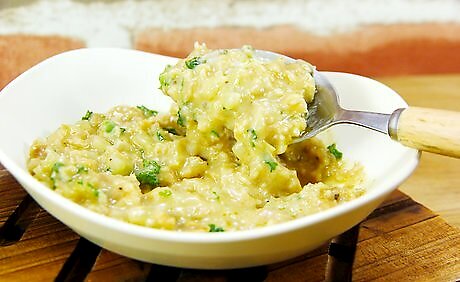
Transfer the risotto to bowls. Once the risotto is fully mixed, spoon it into bowls for serving. It should make between 6 to 8 servings.
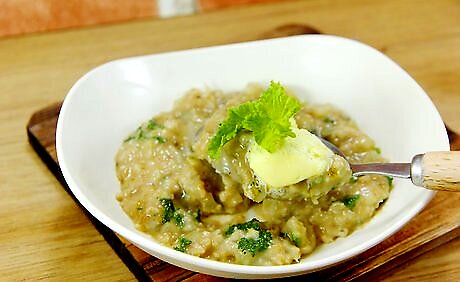
Top the risotto with the remaining herbs, cheese, and oil. Once you’ve plated the risotto, use the remaining torn basil leaves, chopped parsley, and Parmigiano-Reggiano cheese to top each bowl. Drizzle a small amount of olive oil over the risotto, and serve while it’s still warm. Oat risotto can be a tasty meal on its own, or you can serve as a side to a main course. Store any leftover oat risotto in an airtight container in the refrigerator. It should keep for up to a week.



















Comments
0 comment